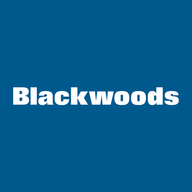
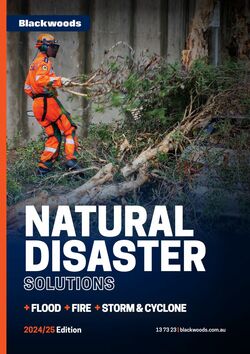



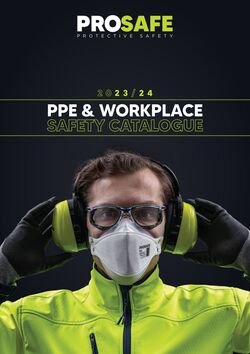
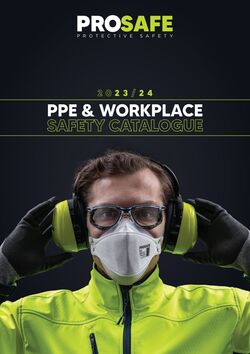



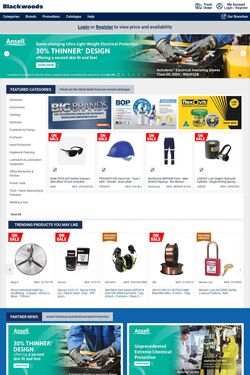
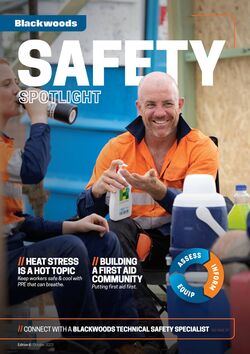
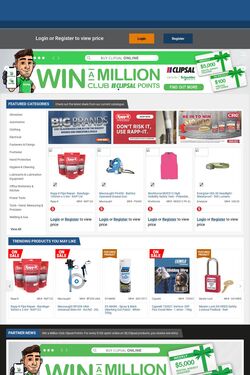
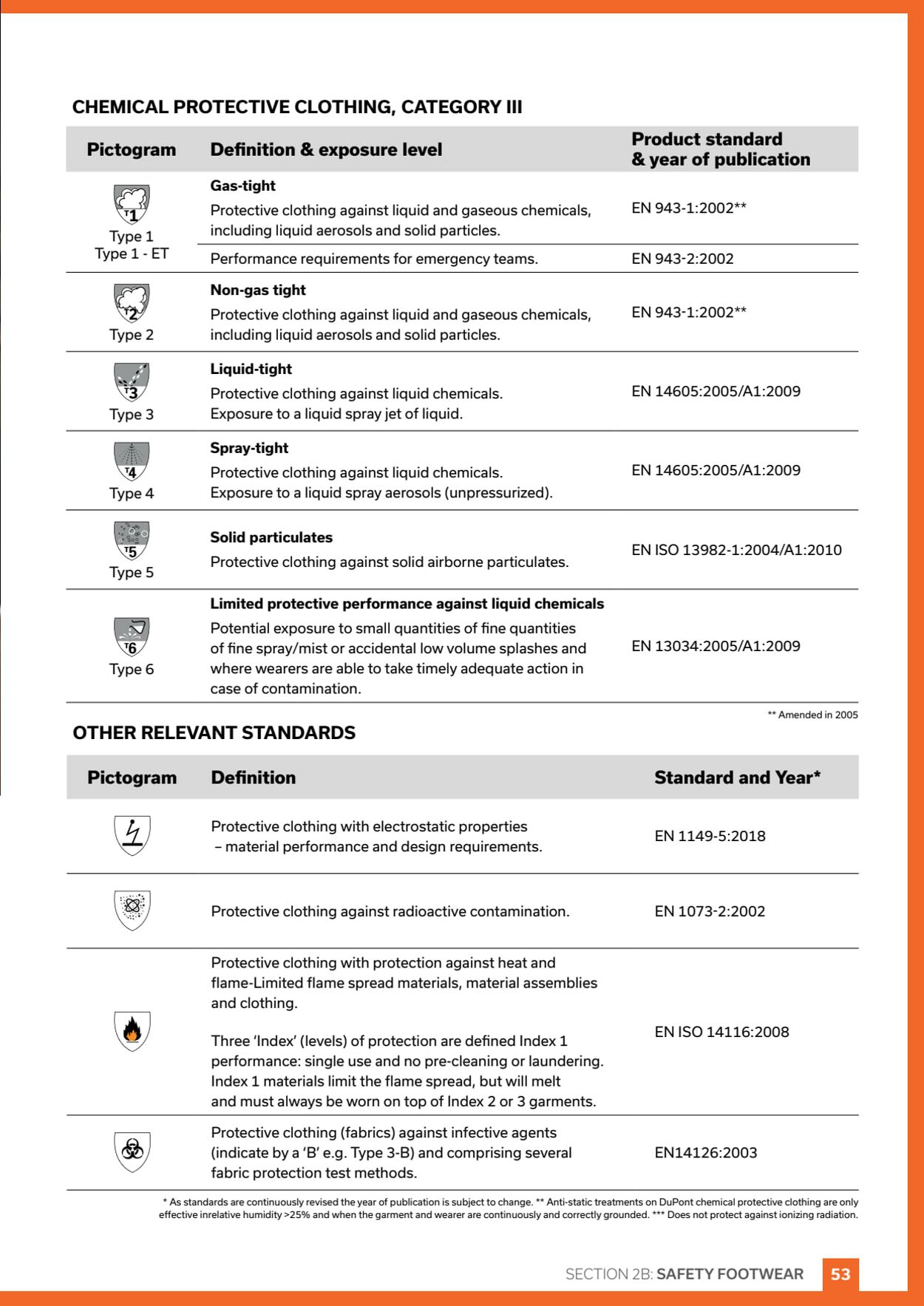
Products in this catalogue
CHEMICAL PROTECTIVE CLOTHING, CATEGORY III . aay Product standard Pictogram Definition & exposure level year ofipublication Gas-tight Ge Protective clothing against liquid and gaseous chemicals, EN 943-1:2002** Type1 including liquid aerosols and solid particles. Type 1-ET Performance requirements for emergency teams. EN 943-2:2002 Non-gas tight Protective clothing against liquid and gaseous chemicals, EN 943-1:2002** Type 2 including liquid aerosols and solid particles. Liquid-tight Protective clothing against liquid chemicals. EN 14605:2005/A1:2009 Type 3 Exposure to a liquid spray jet of liquid. Spray-tight Protective clothing against liquid chemicals. Exposure to a liquid spray aerosols (unpressurized). EN 14605:2005/A1:2009 Solid particulates Protective clothing against solid airborne particulates. EN ISO 13982-1:2004/A1:2010 Type 6 Limited protective performance against liquid chemicals Potential exposure to small quantities of fine quantities of fine spray/mist or accidental low volume splashes and where wearers are able to take timely adequate action in case of contamination. EN 13034:2005/A1:2009 OTHER RELEVANT STANDARDS Pictogram 4 Definition Protective clothing with electrostatic properties ~ material performance and design requirements. ** Amended in 2005 Standard and Year* EN 1149-5:2018 Protective clothing against radioactive contamination. EN 1073-2:2002 Protective clothing with protection against heat and flame-Limited flame spread materials, material assemblies and clothing. Three ‘Index’ (levels) of protection are defined Index 1 performance: single use and no pre-cleaning or laundering. Index 1 materials limit the flame spread, but will melt and must always be worn on top of Index 2 or 3 garments. EN ISO 14116:2008 Protective clothing (fabrics) against infective agents (indicate by a‘B' e.g. Type 3-B) and comprising several fabric protection test methods. EN14126:2003 * As standards are continuously revised the year of publication is subject to change. ** Anti-static treatments on DuPont chemical protective clothing are only effective inrelative humidity >25% and when the garment and wearer are continuously and correctly grounded. *** Does not protect against ionizing radiation. SECTION 2B: SAFETY FOOTWEAR
| Name | Details |
|---|